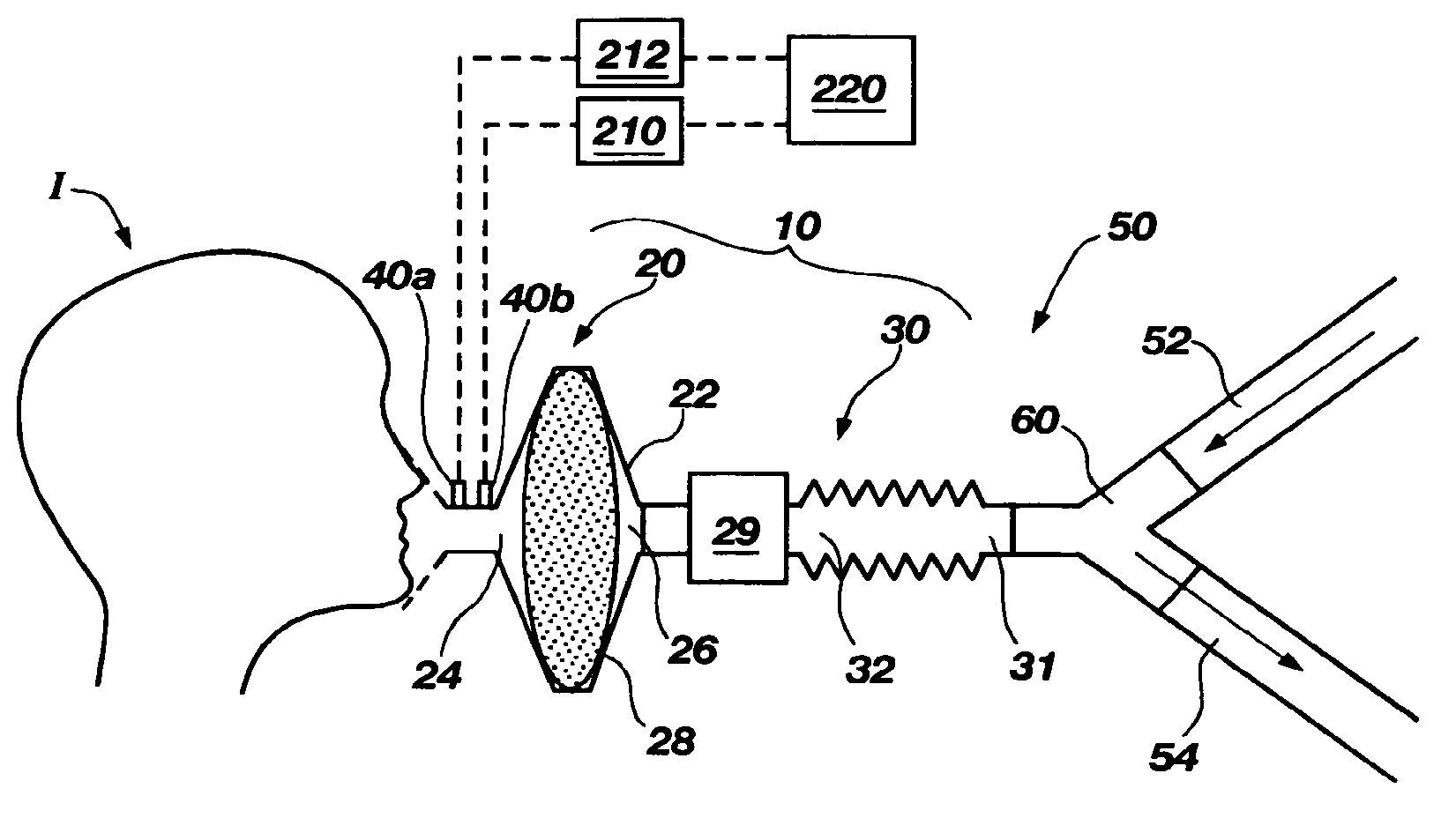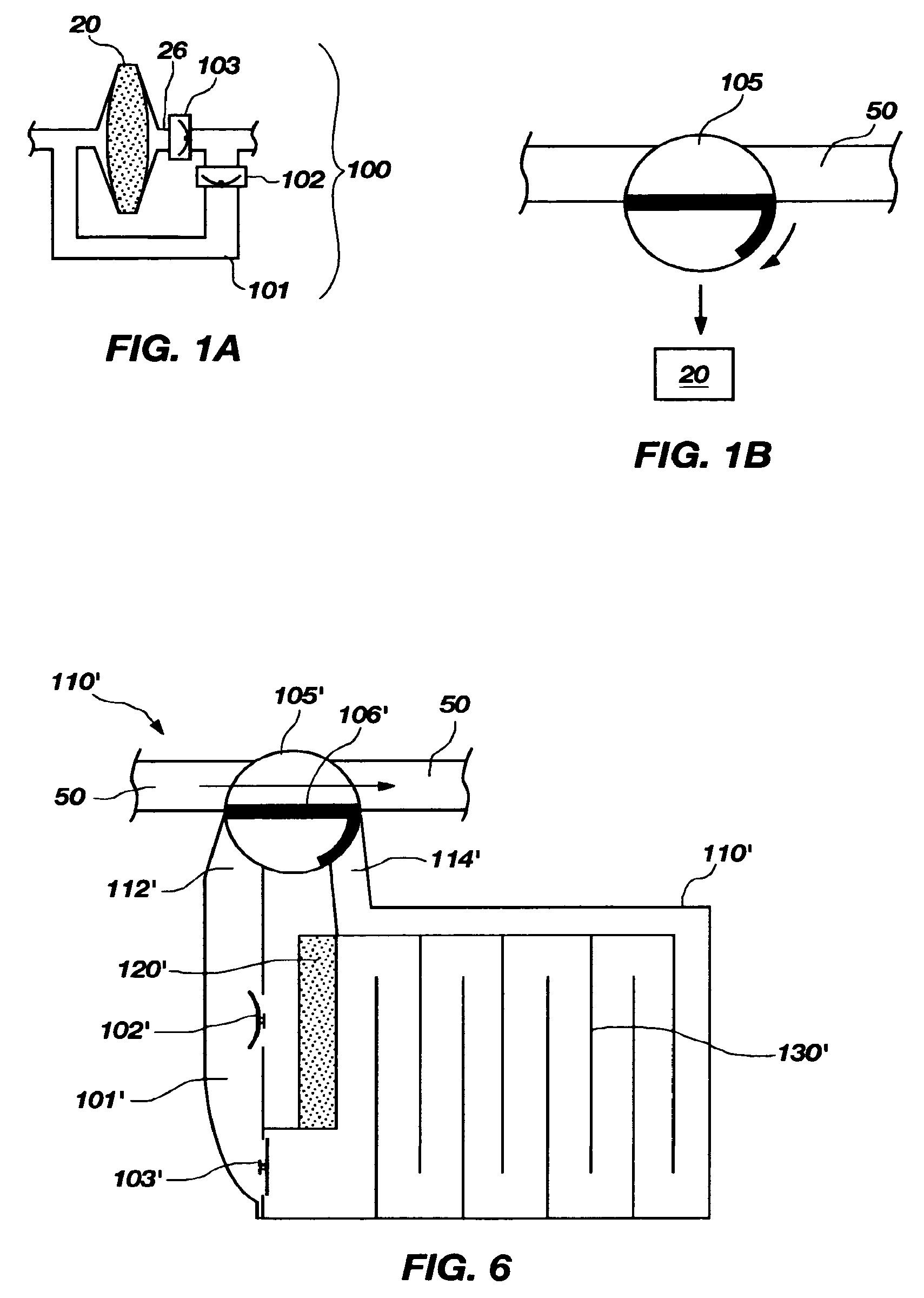Apparatus and techniques for reducing the effects of general anesthetics
a general anesthetic and apparatus technology, applied in the field of apparatus and techniques for reversing the effects of inhaled general anesthetics, can solve the problems of reducing the level of carbon dioxide, reducing the rate of blood and not filtering anesthetic agents from exhaled air, so as to increase the rate of blood flow and respiratory volume, accelerate the rate, and increase the effect of blood flow through the subject's brain
- Summary
- Abstract
- Description
- Claims
- Application Information
AI Technical Summary
Benefits of technology
Problems solved by technology
Method used
Image
Examples
Embodiment Construction
[0037]With reference to FIG. 1, an anesthesia reversal system 10 according to the present invention, which may be positioned along a portion of a breathing circuit 50, between a subject I and a Y-connector 60, and includes a filter 20 and a rebreathing component 30. An inspiratory limb 52 and an expiratory limb 54 may be coupled to Y-connector 60 and, thus, to breathing circuit 50. Notably, the inspiratory and expiratory limbs of some breathing circuits are coaxial. Nonetheless, the junction between the inspiratory and expiratory hoses of such breathing circuits is still referred to as a “Y-connector.”
[0038]As depicted, filter 20 is positioned near the endotracheal tube for an intubated patient or over the mouth and / or nose of a subject I when breathing through a mask or mouthpiece so as to remove exhaled anesthetic agents before they flow into the remainder of anesthesia reversal system 10, where they might otherwise be adsorbed by the surfaces of anesthesia reversal system 10 to r...
PUM
 Login to View More
Login to View More Abstract
Description
Claims
Application Information
 Login to View More
Login to View More - R&D
- Intellectual Property
- Life Sciences
- Materials
- Tech Scout
- Unparalleled Data Quality
- Higher Quality Content
- 60% Fewer Hallucinations
Browse by: Latest US Patents, China's latest patents, Technical Efficacy Thesaurus, Application Domain, Technology Topic, Popular Technical Reports.
© 2025 PatSnap. All rights reserved.Legal|Privacy policy|Modern Slavery Act Transparency Statement|Sitemap|About US| Contact US: help@patsnap.com



